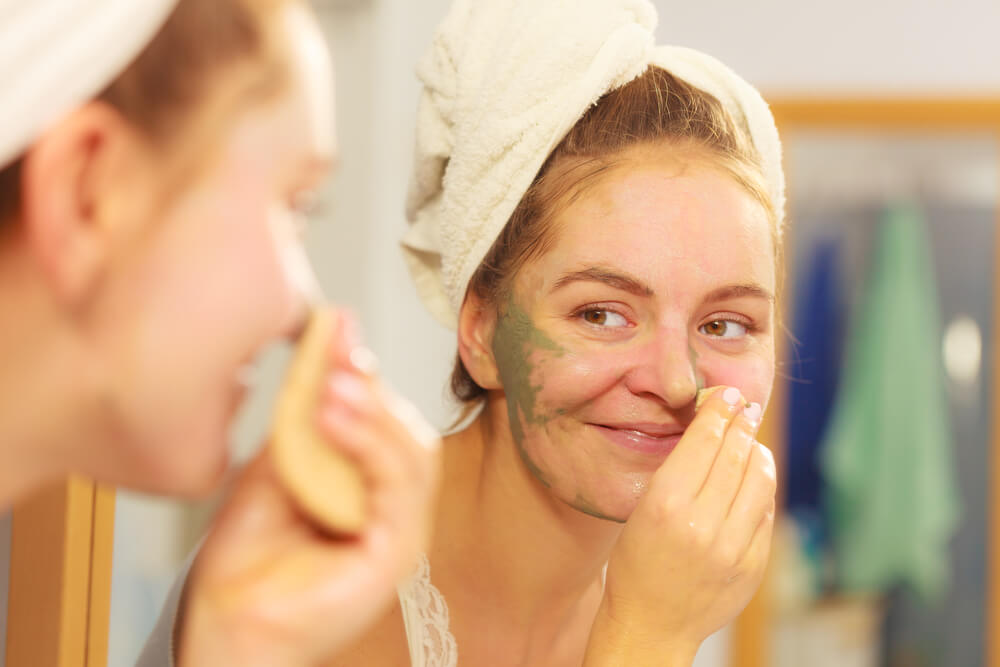

The Importance of Exfoliation for Sensitive Skin
As we go about our daily lives, debris builds up on our skin. Buildup can include makeup, dirt, dead skin, and more, and it’s important to remove this to avoid clogging our pores.
The best way to remove that buildup is through exfoliation. Let’s dig into what exfoliation is, why it’s so important for those with sensitive skin and skin disorders, and how to exfoliate irritation-prone skin:
What is Exfoliation?
Exfoliation is simply the removal of that buildup we just mentioned. You’ve probably read somewhere that it should be incorporated into your skincare routine, and whatever you read was correct! You should definitely be exfoliating on a regular basis, but note that there are different types, and some types should be used with caution, especially if you have sensitive or dry skin:
Mechanical Exfoliants
Mechanical exfoliation is exfoliation that’s performed by a machine, such as a laser. This type is the least common as you either have to visit a med spa or dermatologist for a procedure, or you have to purchase an expensive tool to use at home. Various mechanical exfoliants can be used on nearly all skin types, though.
Physical Exfoliants
Physical exfoliation is a common at-home way to remove buildup from your skin. This is done through a granular scrub, and if you’ve only ever tried one type of exfoliation, it was probably physical. Although physical exfoliants work, they’re not recommended for sensitive skin as they can be very abrasive and cause irritation.
Some physical exfoliants can be:
- Bristle Brush (also known as dry brushing): these are brushes that remove layers of dead skin cells without needing product or water
- Exfoliating Sponge: these are more gentle than brushes and most often used in the shower with water and body wash
- Exfoliating Glove: this is the same as a sponge, but easier to use if sponges tend to be difficult to grip
- Exfoliating scrub: this is applied directly to your skin to remove dead skin cells, like a sugar scrub.
Chemical Exfoliants
Chemical exfoliation is similar to physical, except instead of using granules to buff away buildup, the product is using chemicals. Chemical exfoliants, which use AHAs and BHAs (types of hydroxy acids that exfoliate the skin), are a very effective way to remove buildup. AHAs are especially recommended for sensitive skin as they’re much gentler than physical exfoliants.
Examples of AHAs (Alpha-hydroxy acids): most commonly used for sensitive, dry skin
- glycolic acid
- lactic acid
- citric acid
Examples of BHAs (Beta-hydroxy acids): these more commonly used for those with acne or oily skin
- salicylic acid
- beta hydroxyl
Why is Exfoliation Important?
As noted, dirt, debris, and dead skin build up on our faces throughout the day, and that buildup can clog pores, which causes acne. Exfoliation is a vital part of your skincare routine because it removes that buildup, which allows your skin to breathe and stay blemish-free. It also improves your skin’s texture and makes it smoother and better for makeup application.
Exfoliation is especially important if you have dry skin or skin conditions like rosacea because your skin is prone to flakiness. A good. gentle exfoliant will remove that buildup and keep your skin clear without drying or irritating your skin further.
Exfoliating based on your skin type:
Different exfoliation methods are recommended based on your skin type:
- Dry skin: avoid mechanical methods as they could be very drying. AHAs are the best method for dry skin
- Sensitive skin: avoid abrasive methods like scrubbing or dry brushing, as it can irritate badly and cause flare ups. It's recommended to opt for a mild chemical option
- Oily skin: Brushing or scrubbing, or a manual method helps as the skin can be thicker and may have extra layers of buildup.
- Normal skin: Any method can be used, so it's a matter of finding your preference
- Combination skin: A mix of both mechanical and chemical can be used, but each method should be used separately, not in conjunction
How to Incorporate Exfoliation into Your Skincare Routine
Though important, exfoliants should not be used on a daily basis. Use one at night after cleansing to slough off excess buildup, and read the product carefully for instructions on frequency.
Most exfoliants will recommend using the product 2-3 times a week. Exfoliating more often than recommended, particularly with a physical exfoliant, can be harmful to your skin’s barrier.
If you’re new to exfoliation and have sensitive skin, start with exfoliating 1-2 times a week and gradually increase the frequency as your skin gets accustomed to the practice.
Make sure you’re exfoliating your body, too! Blemishes and dry skin are not exclusive to the face, so find a good exfoliant that leaves your extremities smooth, too.
Post Exfoliation Care
Exfoliating leaves your skin feeling soft and smooth, but also very sensitive. It’s important to follow up post-exfoliation with products that’ll soothe your skin, like gentle body washes and creams. We suggest using our Total Moisture Body Wash and our Moisture Restore Lotion along with your exfoliant for the softest, healthiest skin possible.
---
Sources
Dermafix
Skincare.com
Healthline
Healthline
